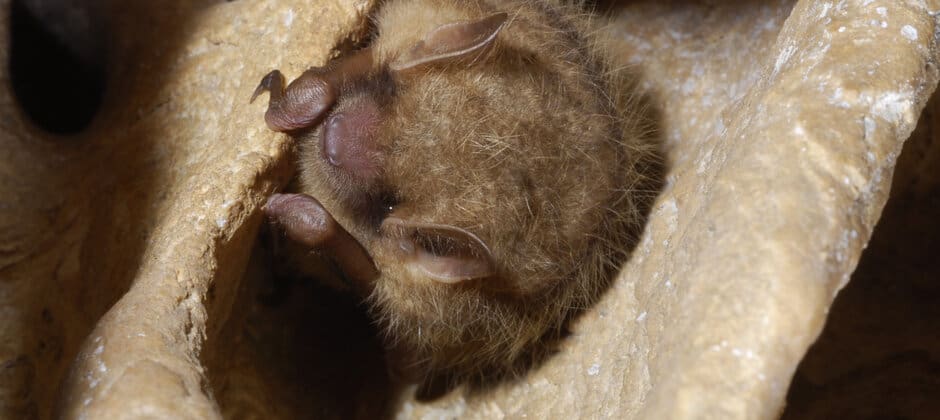Share this article
USFWS proposed to list tricolored bats as endangered
The U.S. Fish and Wildlife Service has proposed listing tricolored bats as federally endangered due to the widespread impact of the deadly white-nose syndrome.
Tricolored bats (Perimyotis subflavus) are found in 39 states east of the Rocky Mountains and Washington, D.C. as well as in parts of eastern Canada, Mexico and Central America. They are one of a handful of species that are most affected by white-nose syndrome, a fungal disease that can be deadly for hibernating bats. One recent study found that 59% of the range of tricolored bats lies within the white-nose syndrome-affected area.
“White-nose syndrome is decimating hibernating bat species like the tricolored bat at unprecedented rates,” said USFWS director Martha Williams in a press release. “The Service is deeply committed to continuing our vital research and collaborative efforts with partners to mitigate further impacts and recover tricolored bat populations.”
Winifred Frick, chief scientist of Bat Conservation International, an organization that was part of the North American Bat Monitoring program that provided important data leading to the proposal, said in a press release that his organization “fully supports the full power” of the Endangered Species Act listing to protect tricolored bats.
“Protection under the Endangered Species Act is the wake-up call that galvanizes our focus on the conservation actions needed to save and recover this species,” Frick said. “Only by working together will we save this species from extinction.”
Tricolored bats, whose numbers are already low from white-nose syndrome, are also threatened by factors like disturbance during roosting, climate change and deaths from wind power turbines.
The USFWS is heading the White-Nose Syndrome National Response Team, a collaborative effort of more than 150 non-governmental organizations, Tribes, institutions and government agencies, to conserve the bats.
Header Image: A tricolored bat in Georgia. Credit: Pete Pattavina/USFWS








